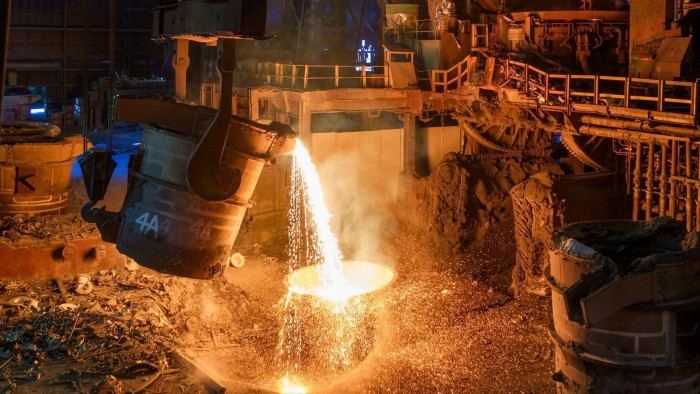Stay informed with free updates
Simply sign up to the UK energy myFT Digest — delivered directly to your inbox.
Output in the UK’s energy-intensive industries has fallen by a third since 2021 to reach a 35-year low, reflecting their exposure to the highest electricity prices of any rich economy, official data showed on Monday.
The production of paper, petrochemicals, basic metals and inorganic products such as cement and ceramics was in 2024 at its lowest level in records stretching back to 1990, the Office for National Statistics said.
The figures underline the challenge facing ministers as they seek to shield British industry from high energy costs that put businesses at a severe disadvantage to competitors in the US and China.
Proposals to tackle the problem are likely to be central to the industrial strategy that the government will set out in June.
The ONS said UK electricity prices were high by international standards because of the country’s relative dependence on natural gas, whose price in European markets rocketed after Russia’s full-scale invasion of Ukraine in February 2022.
Gas-fired power stations generated less than a third of the UK’s electricity on average across last year, but they typically set the price of electricity most of the time due to the UK’s marginal pricing system.
Under the UK system, the price is set by the most expensive supply bid accepted from the various electricity generators.
The government considered splitting up the wholesale market to break this link, but decided against last spring, saying it would be too disruptive to deliver and that gas should set the price less of the time as more renewables are built.
Britain also sets a relatively high minimum price for carbon emissions and gives energy-intensive industries less generous carve outs from climate-related levies than Germany, France and the Netherlands.
The average electricity price for non-domestic users almost doubled over a three-year period up to late 2023 and remains 75 per cent higher than it was at the start of 2021.
The ONS said the industries it had identified were all operating in competitive international markets, putting them “at greater risk from a relatively large increase in UK electricity and gas prices”.
Between 2021 and 2024, manufacturing of paper and paper products contracted by 28.9 per cent. Manufacturing of petrochemicals plunged by 30.2 per cent, and that of inorganic non-metallic products, including concrete, cement, glass and ceramics, by 30.6 per cent.
Meanwhile, output of basic metals fell by 46.5 per cent, a finding that reflects Tata Steel’s closure of the two blast furnaces at its Port Talbot plant.
Britain’s domestic crude steel production last year fell to just 4mn tonnes — the lowest total since the Great Depression of the 1930s.
The decline, from 5.4mn tonnes in 2023, was primarily due to the closures at the Port Talbot steelworks, though production issues at British Steel, over which the government seized control last month, played a part.
Both businesses and unions have urged ministers to take action to cut costs, with Stephen Phipson, chief executive of the Make UK manufacturing lobby, warning that Britain risked “passive deindustrialisation”.
Although details are still being thrashed out, one option under consideration is to further cut network charges paid by industrial users, according to people working on the plan.
Rishi Sunak’s government last year put in place the “British Industry Supercharger” measures to help energy intensive industries, which cut network charges for eligible companies by 60 per cent.
The Trades Union Congress, the umbrella body for the labour movement, is urging ministers to match the 90 per cent compensation that France and Germany offer industrial users for these network charges. The UK compensation rate is now 60 per cent.
Paul Nowak, TUC general secretary, said companies were being “pushed to the wall”, and called for “decisive” action to level the playing field.
Additional reporting by Sylvia Pfeifer in London

